|
|
Post by Dietmar on Nov 17, 2017 10:27:52 GMT -5
|
|
|
|
Post by grahamew on Nov 18, 2017 5:16:47 GMT -5
I was hoping for an excuse to post some more Morrow photos that weren't in the first list. Here are a few anyway:  Three Indians on horseback (ca. 1876) I wonder if they're scouts with Crook's column 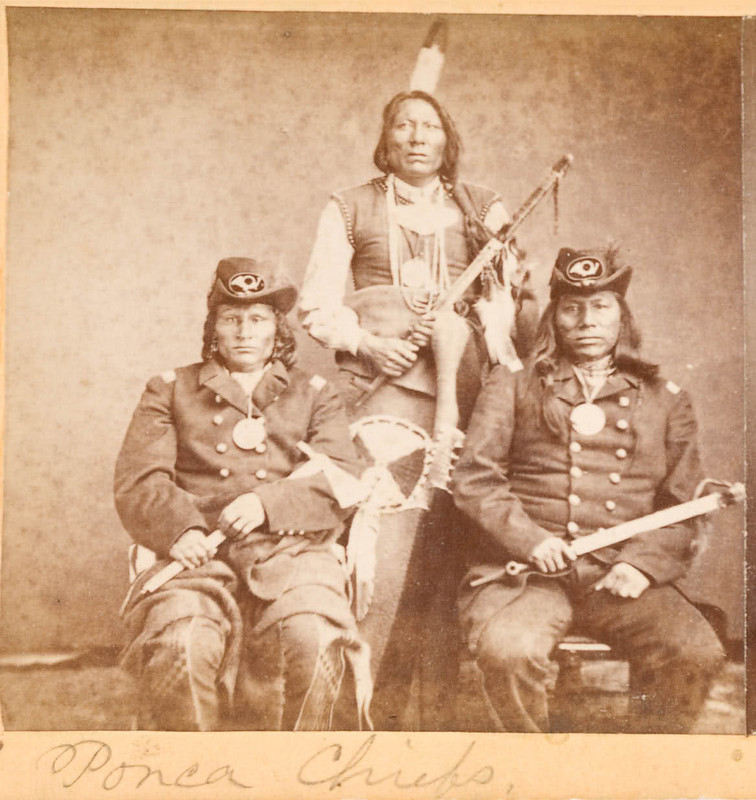 White Eagle and other Ponca chiefs 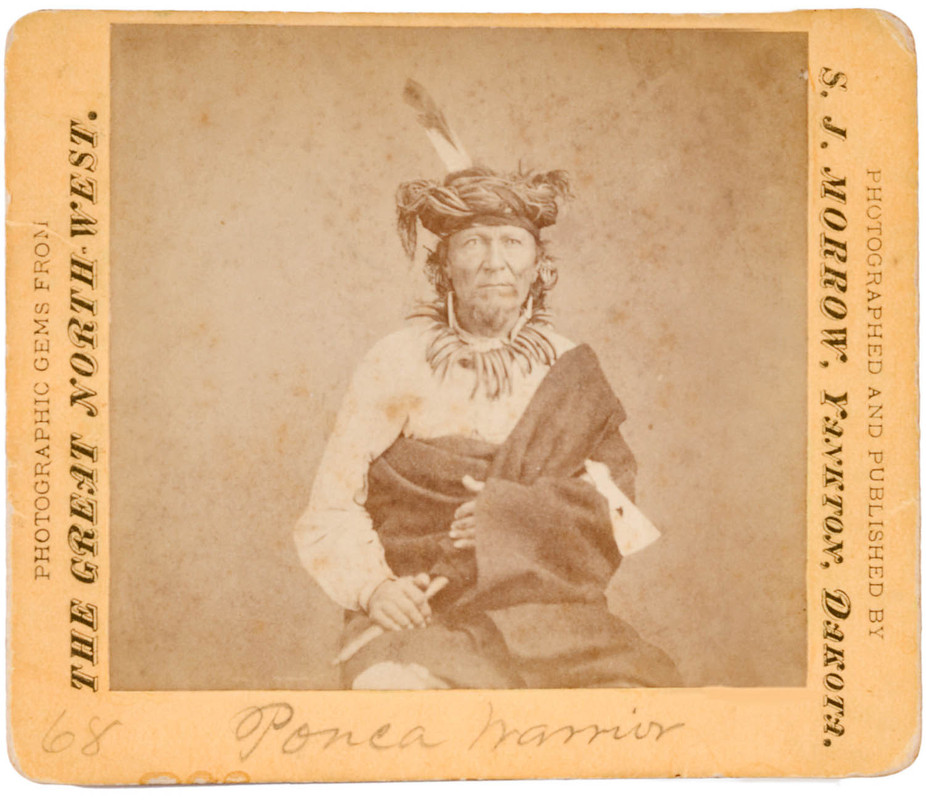 Antone Rimeaux (Lone Chief), Ponca 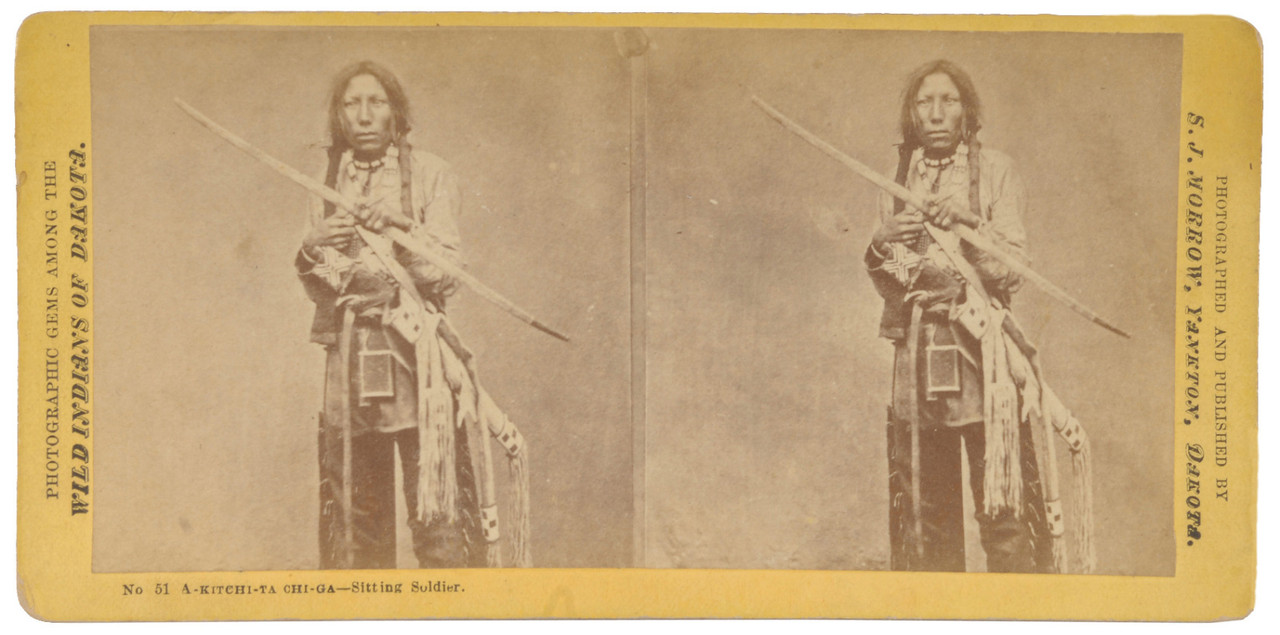 Sitting Soldier (Yanktonai?) 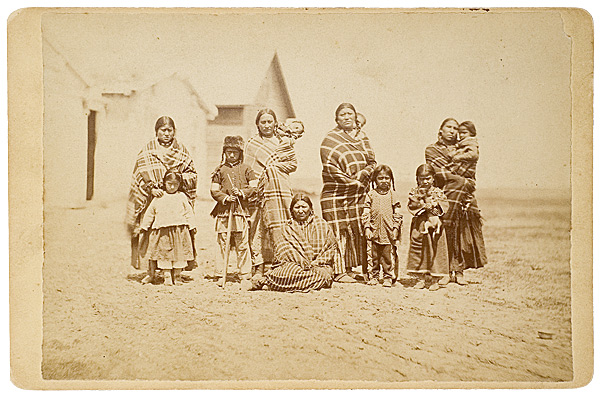 Arikara women and children - though this is the same location as the phot of Two Bears and other headmen that it makes me wonder... 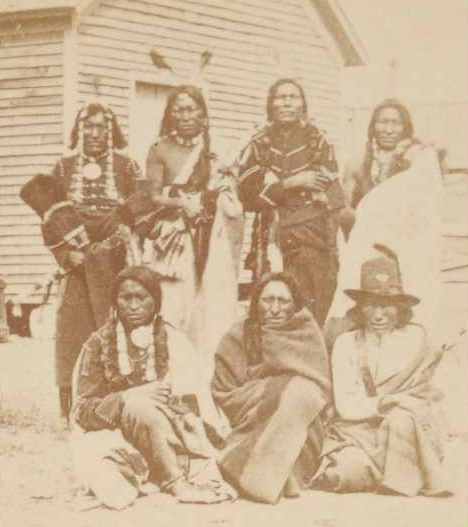  A late Morrow - Struck by the Ree and wife, 1883 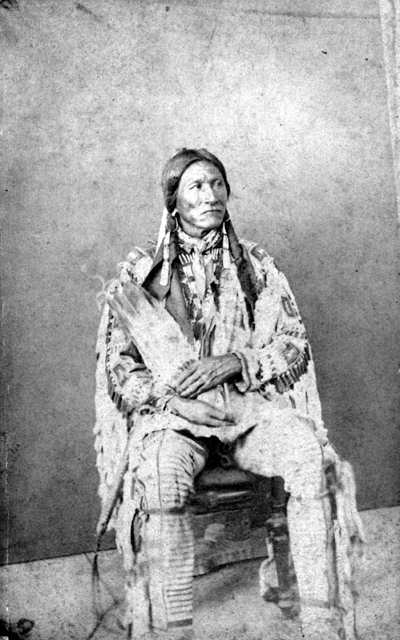 White Bull, Sans Arc 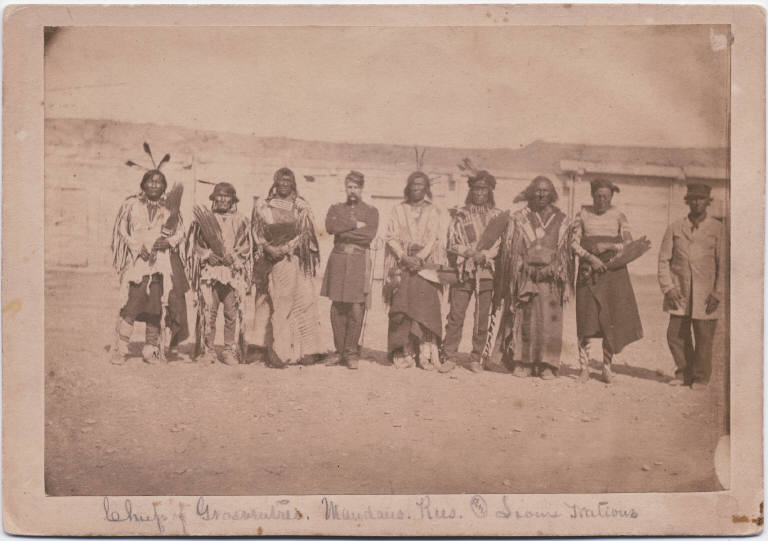 Hidatsa, Mandan and Yanktonai headmen 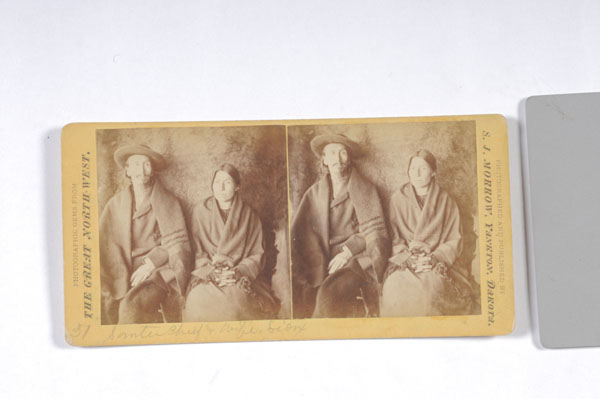 Santee chief and wife 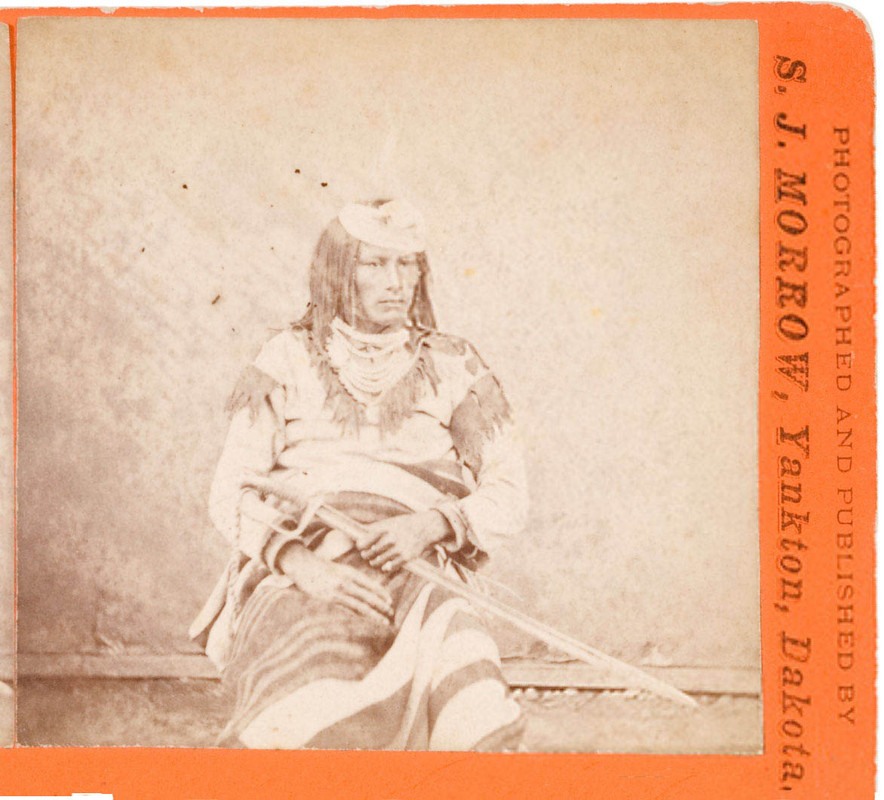 Cheyenne - likely another Arikara or Hidatsa man  Stabs, Bobtail Bull, Yellow Wolf, Little Soldier (Arikara)  Peace treaty between Sisseton Dakota, Mandan, Hidatsa and Arikara, Fort Berthold, 11 July, 1870. I have a version of this in better resolution somewhere 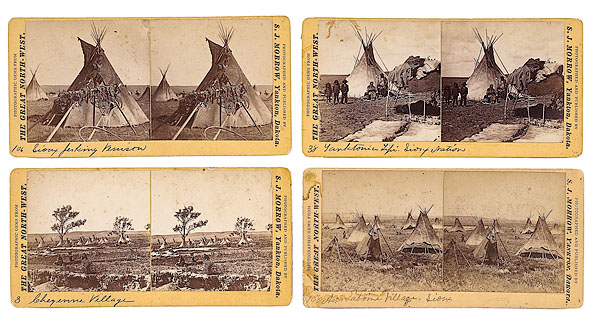 Tipis 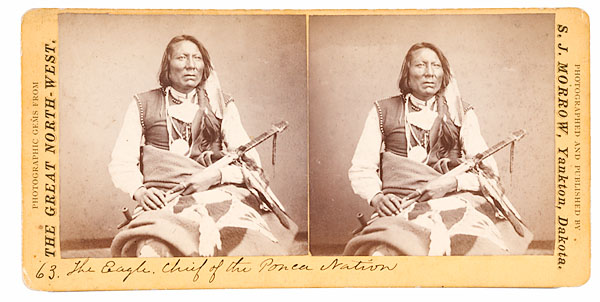 White Eagle, Ponca  Ponca leaders 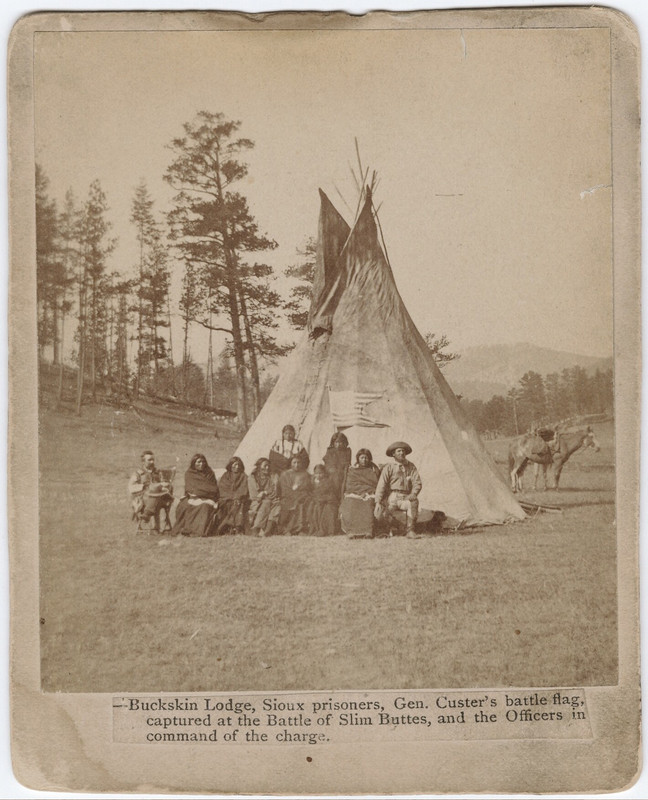 Lakota (Miniconjou?) captives at Slim Buttes. Charging Bear is supposed to be Indian the man at the left 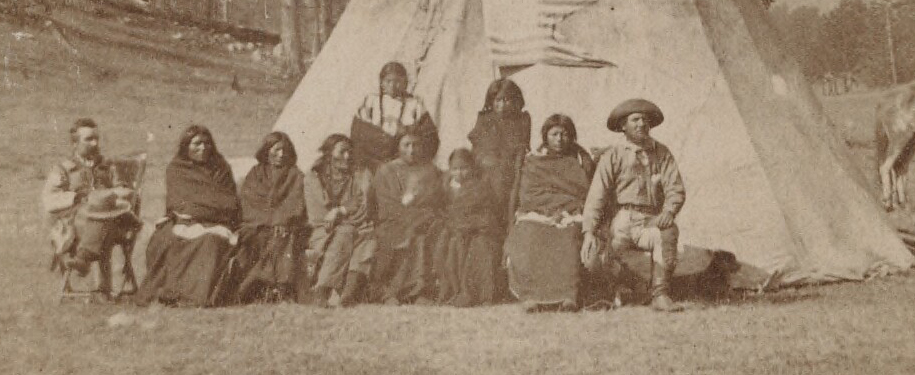 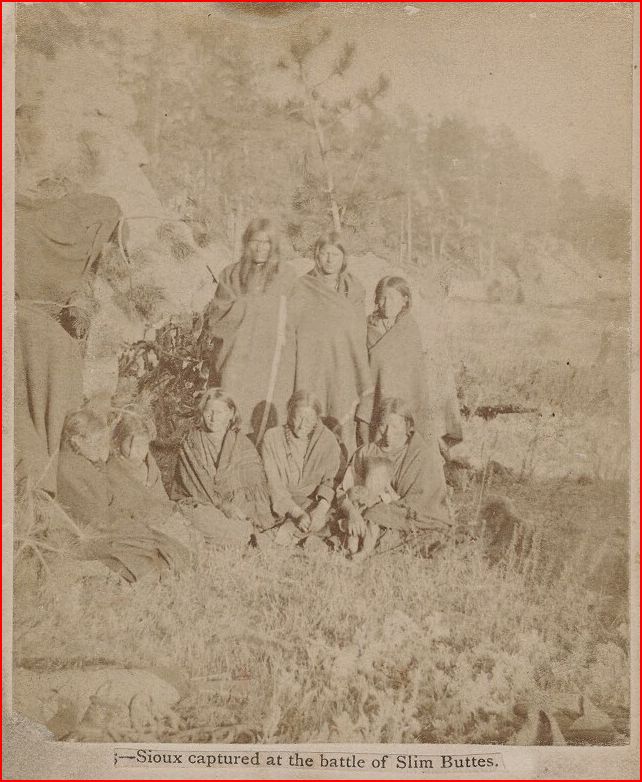 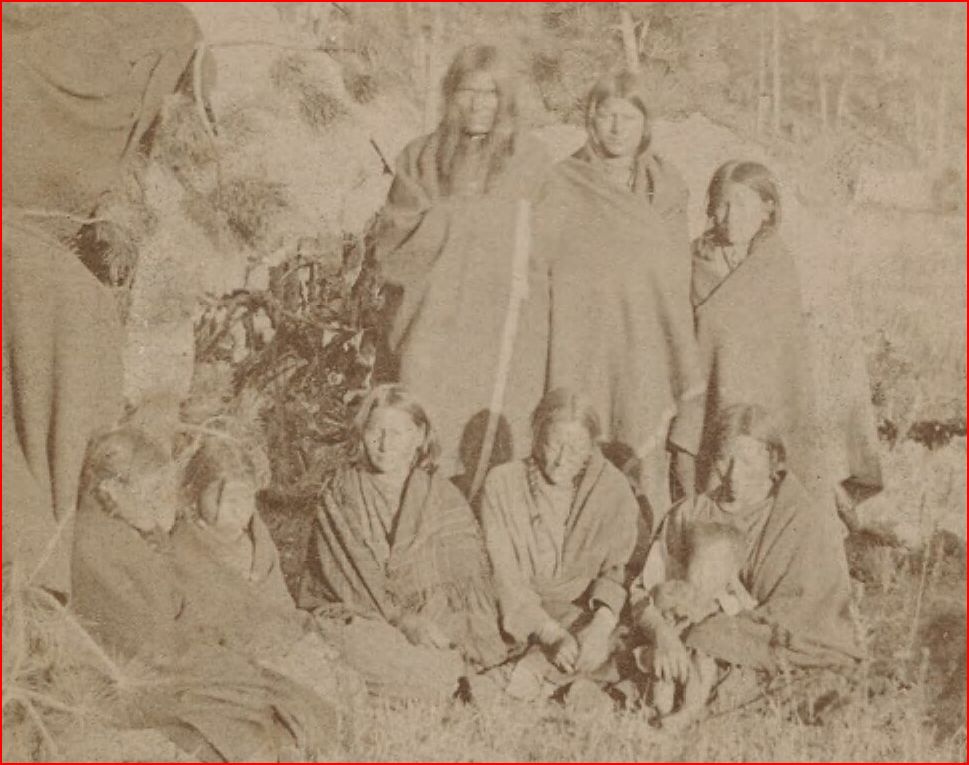 Lakota prisoners at Slim Buttes (details)  I had saved this as a Morrow, but I'm not so sure. Omahas?  Mandans, 1870 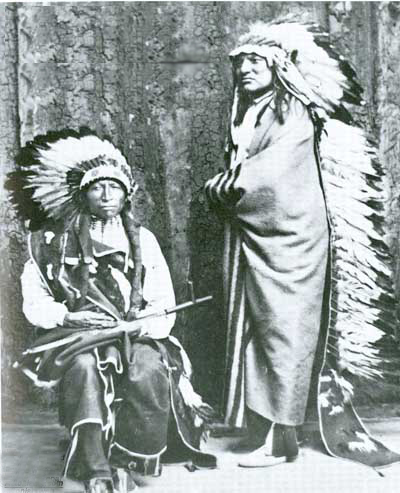 Horse Road and Ice Bear 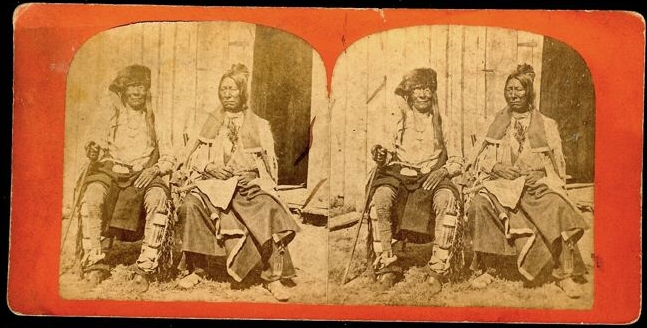 Struck by the Ree and Feather in the Ear, Yankton 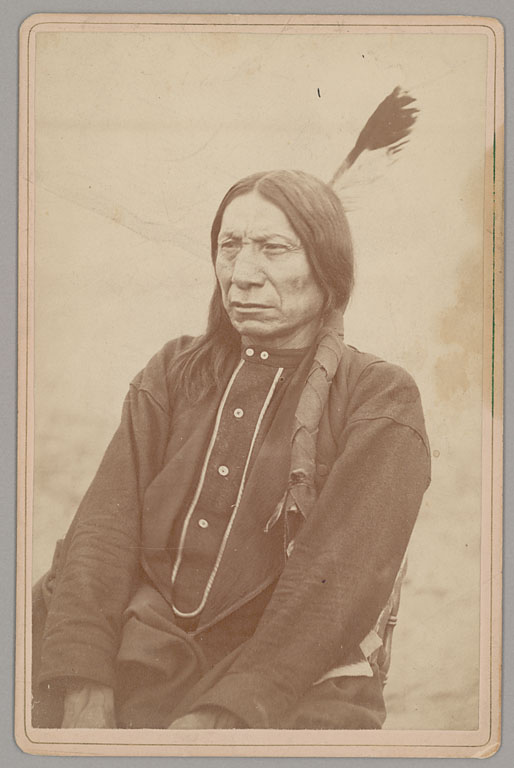 Red Cloud - is this a Morrow? There is an alternate version of this, with his braid over his shoulder. |
|
|
|
Post by grahamew on Nov 18, 2017 7:34:18 GMT -5
To answer my own question above: probably not Morrow and not Mandan. This is Julius Meyer with Iowa chiefs and you can see two of the gentlemen in the photo above: 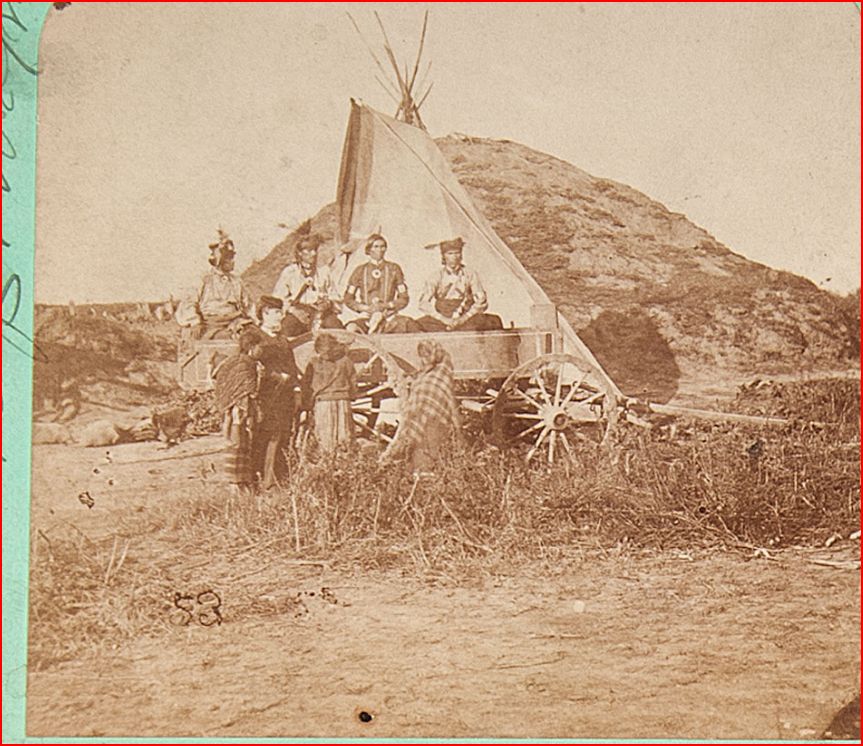 |
|
|
|
Post by grahamew on Nov 19, 2017 7:22:53 GMT -5
Here's the Fort Berthold July 1870 photo in better resolution: 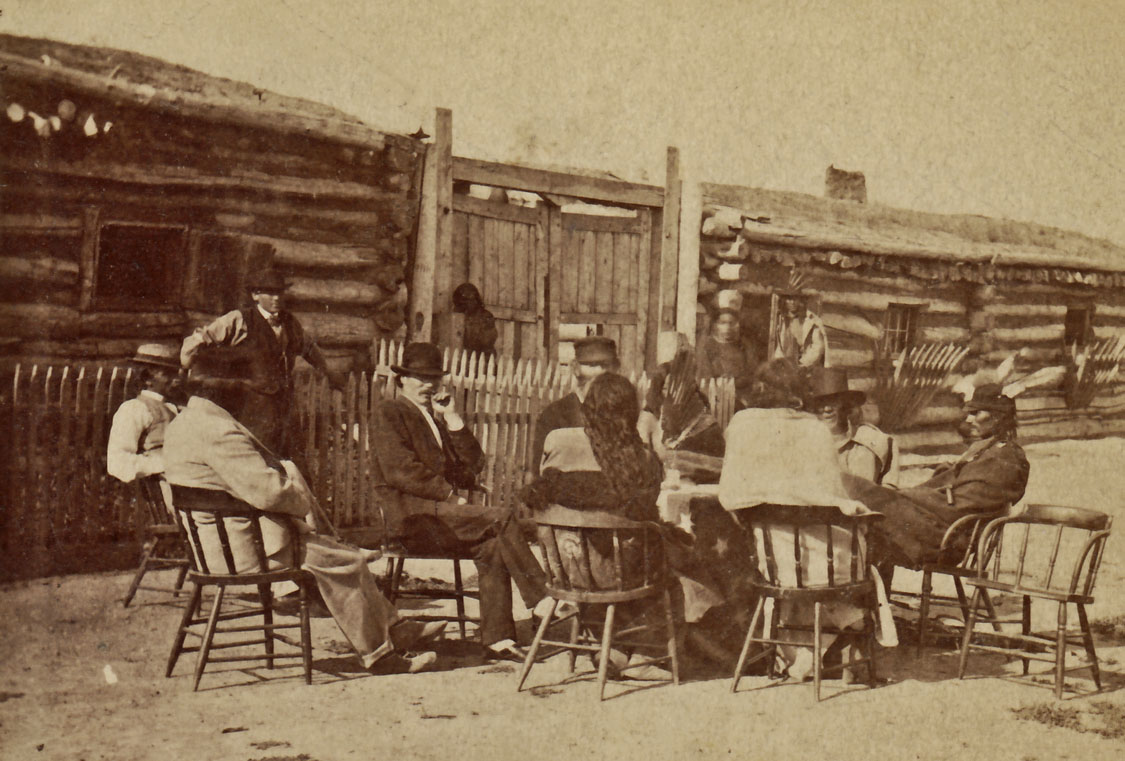 The three horsemen photo at the top of my previous post ... The man on the right with the white hat? 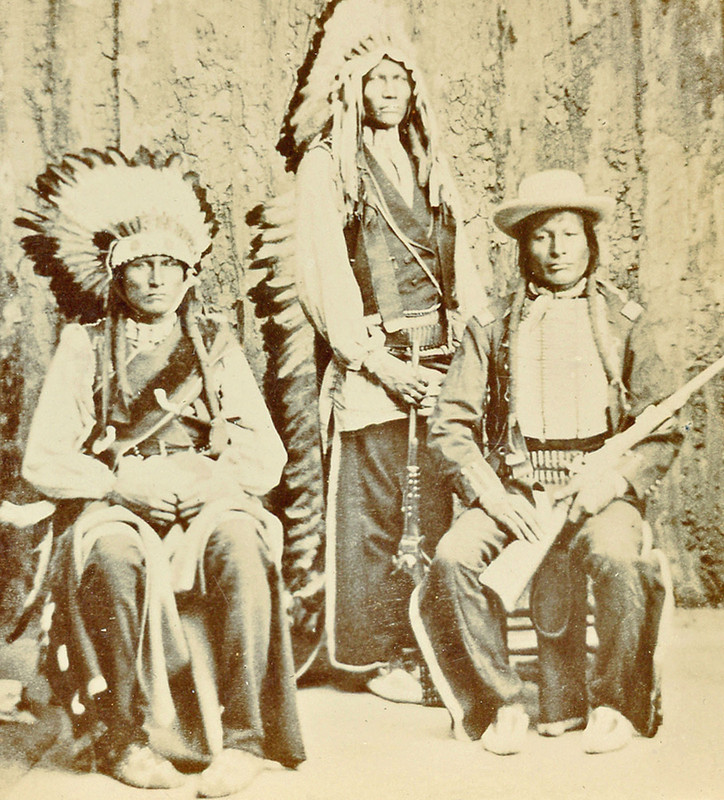 ... and is the man in the middle the one on the left here, with the fur sash/bandolier? 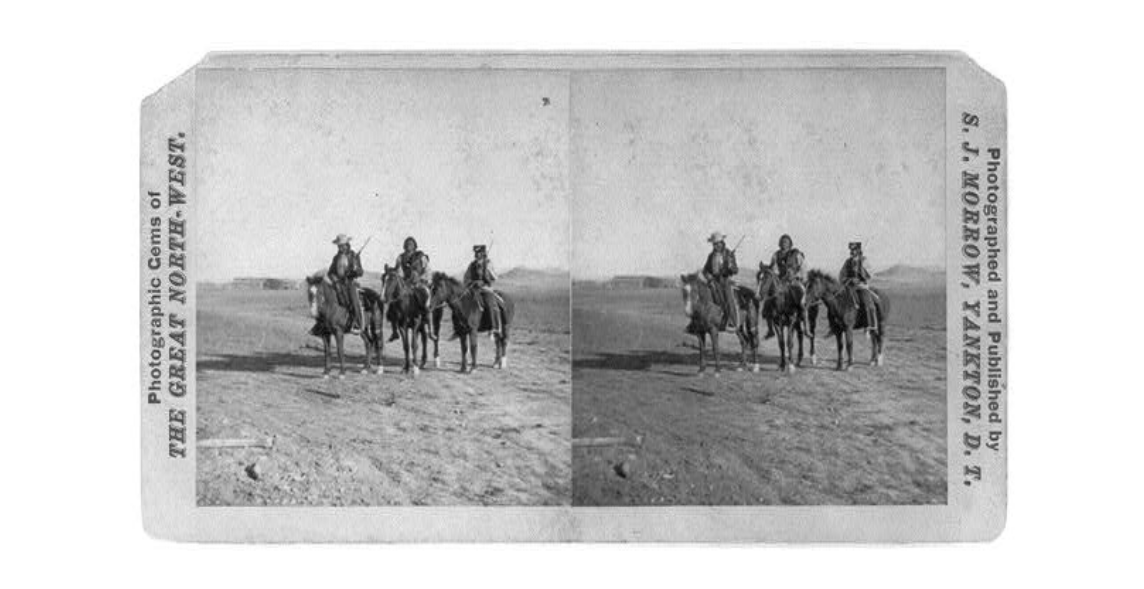 So... Cheyenne scouts? |
|
|
|
Post by grahamew on Nov 19, 2017 12:00:09 GMT -5
A couple more - Yankton dancers: 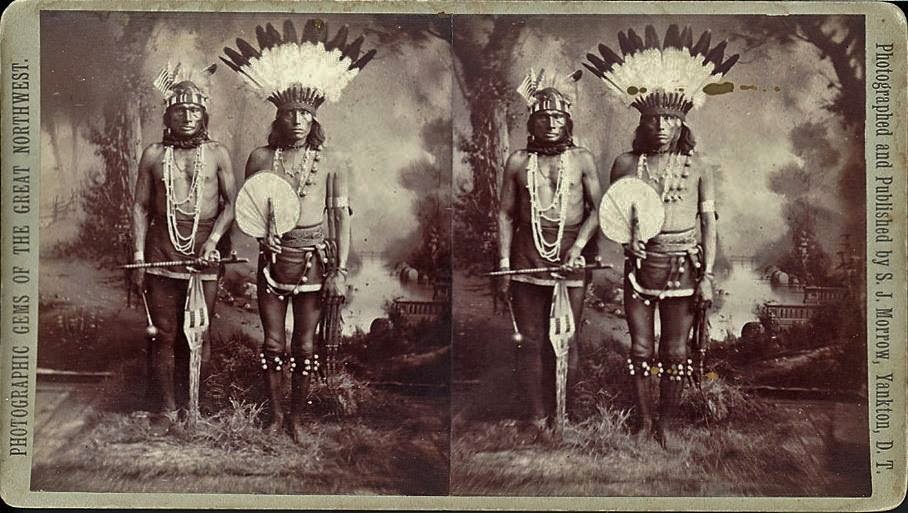 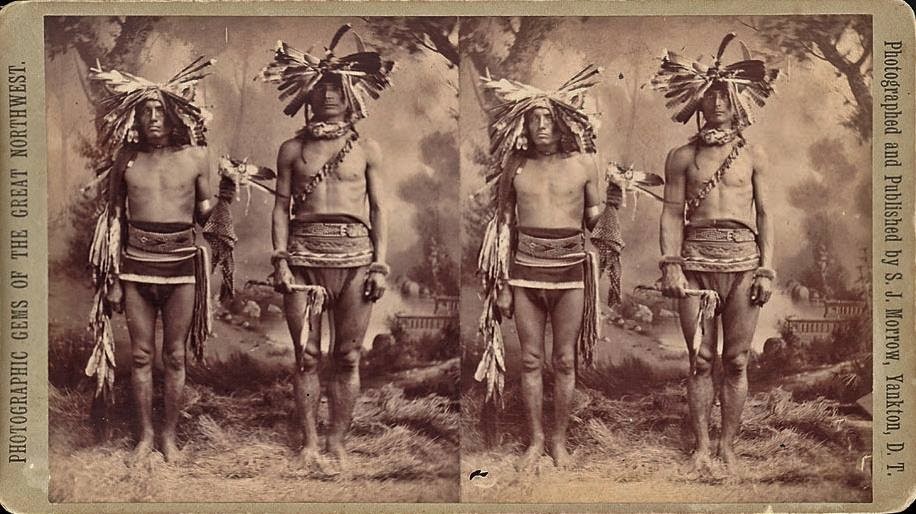 |
|
|
|
Post by Dietmar on Nov 20, 2017 9:33:45 GMT -5
Grahame, I think the group picture with Julius Meyer is a J. H. Hamilton. At least he took portraits of some men in the picture.
Great that you identified the supposed Cheyenne scout picture.
|
|
|
|
Post by Dietmar on Nov 20, 2017 9:44:59 GMT -5
Morrow himself wrote in a letter about Sitting Soldier: "I sent you a picture of Ah-keetch-e-tah e-u-ti-kah (cannot say that it is spelled correctly but it is near as I can spell it so as to give the pronunciation), or Setting Soldier. He is an Unc-pa-pa chief under Two Bear. His entire suit is buckskin, military regulation hat, and he is the most fantastic specimen of the Genus Homo I have yet met." [Frontier Photographer - Stanley J. Morrow´s Dakota Years,Hurt and Lass, 1956, page 15] The man in the stereograph looks a bit young to be a chief though:  |
|
|
|
Post by Dietmar on Nov 20, 2017 9:55:13 GMT -5
|
|
|
|
Post by grahamew on Nov 20, 2017 14:25:39 GMT -5
I wonder if he's the man standing at the right in the photo of Two Bears and his headmen... I wonder if this is a Morrow: 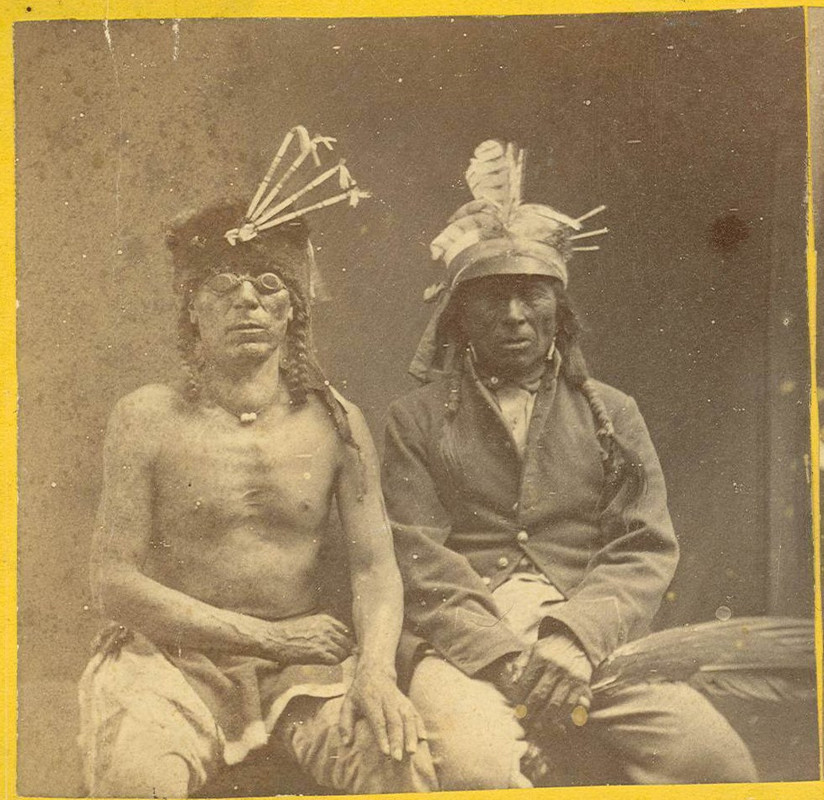 Bad Gun and Little Wolf, Mandan 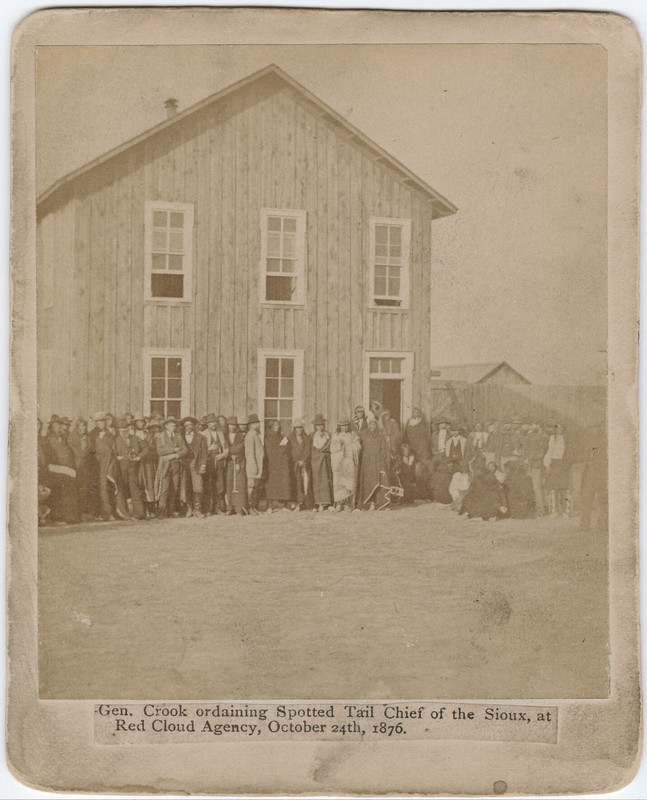  Cheyenne prisoners near Fort Keogh, 1878 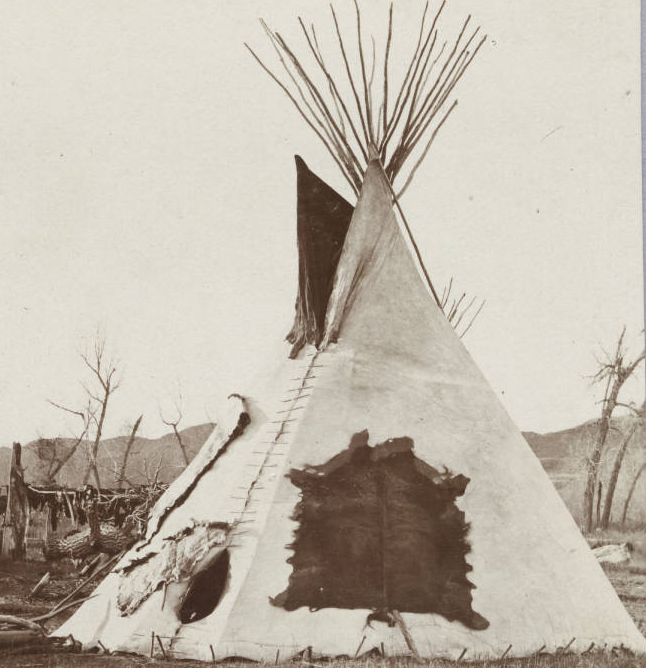 Cheyenne camp on the Yellowstone, 1878 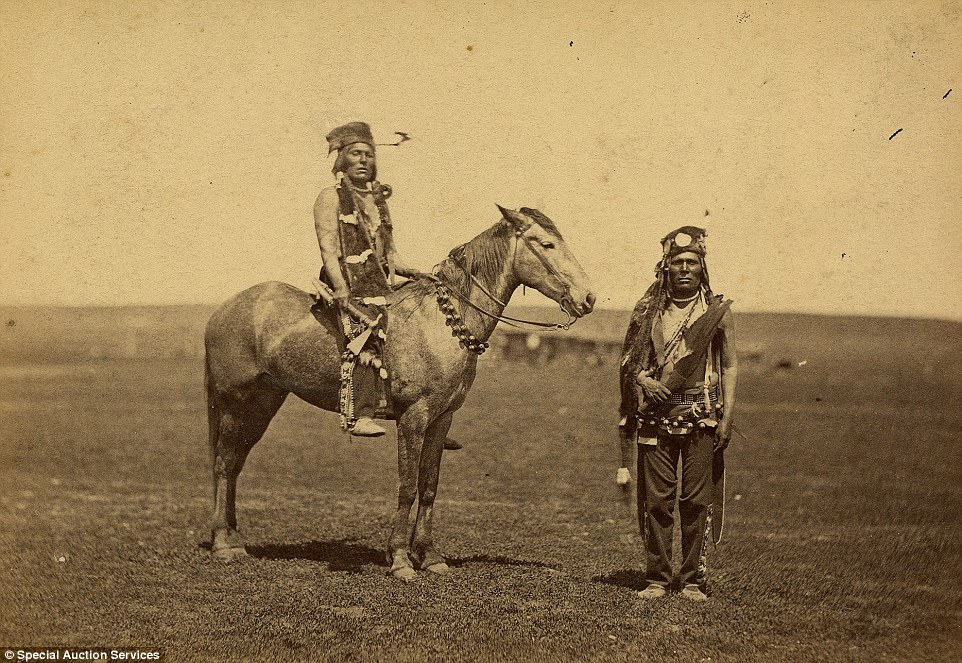 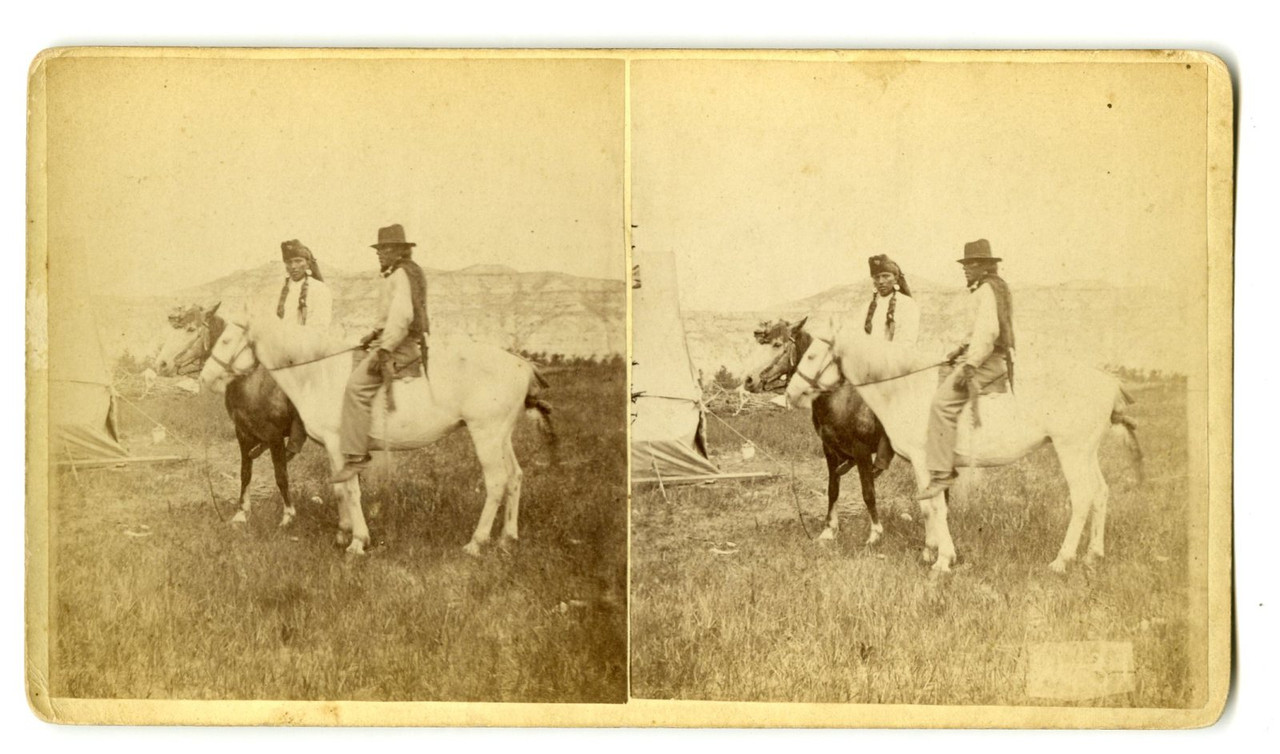 I think these were Arikara scouts - CRoss Thorn and Bull in the Water, 7th cavalry scouts (or is this a Haynes?) 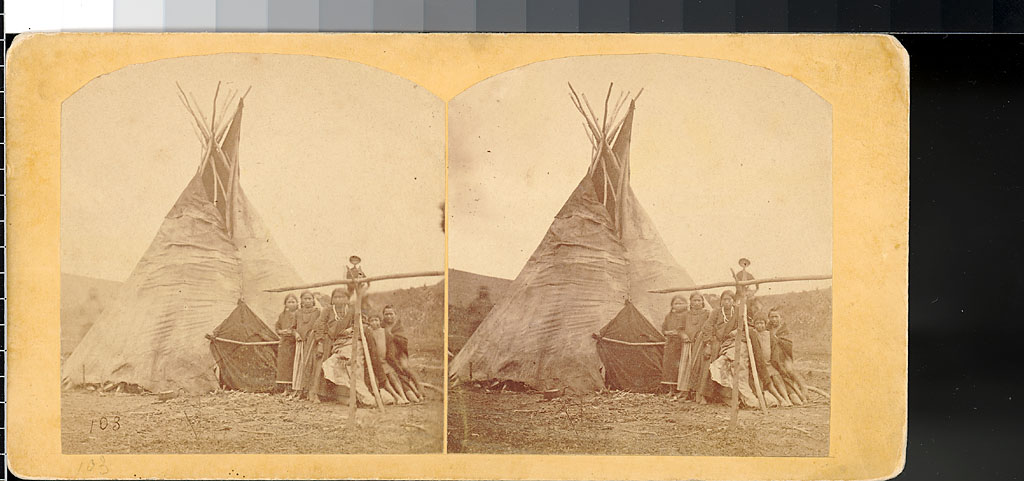 Omaha  Cheyenne medicine lodge on the Yellowstone |
|
|
|
Post by Dietmar on Nov 21, 2017 9:37:59 GMT -5
Here´s Wolf Voice again: 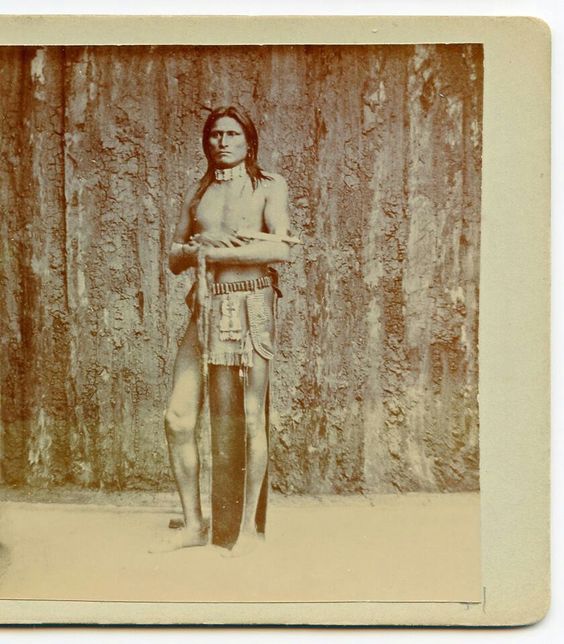 ...and Two Moons, Cheyenne. Both photos were copied and published later by L. A. Huffman: 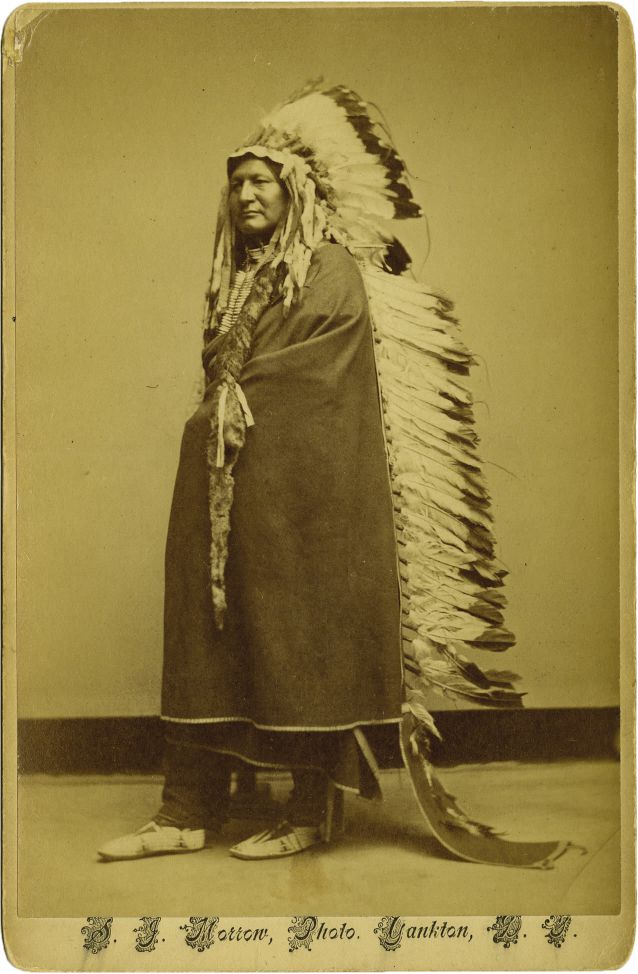 |
|
|
|
Post by kingsleybray on Nov 21, 2017 9:54:02 GMT -5
Wolf Voice was a Gros Ventre (Atsina) man married to a Northern Cheyenne woman. I wonder if he was connected to the small Cheyenne kindred group called Notamin (Facing North), which comprised people of mixed Cheyenne-Gros Ventre descent?
In the group photo showing three men, Wolf Voice is seated left (in warbonnet) while the man at right in hat is Brave Wolf, according to the information in Fr Powell's People of the Sacred Mountain (see Vol. 2, pp 1136-37).Brave Wolf was a very prominent Cheyenne warrior, a Contrary in the period 1866-76.
|
|
|
|
Post by Dietmar on Nov 21, 2017 10:05:37 GMT -5
From the detailed information in Lass/Hurt´s "Frontier Photographer" I made this timeline to help bring the photos we have posted in chronological order:
Stanley J. Morrow biographical timeline:
May 3, 1843: birth in Richard County, Ohio
1861: Morrow joins Company F of the 7th Wisconsin Regiment as a drummer boy
1864: Morrow learns photographing from Mathew B. Brady as his assistant
December 31, 1865: marriage to Isa A. Ketchum
1868: Morrow moves to Yankton, Dakota Territory; birth of his daughter Nellie
January 1869: Morrow opens his first gallery in Yankton
March 1869: short trip to Sioux Falls
July 1869: first trip up the Missouri River to Fort Sully; more trips up and downriver to Ft. Thomson, Yankton and Ft. Rice.
November 1869: return to Yankton, selling photographs he took during the trips
Spring 1870: again trip upriver to Ft. Rice, Ft. Buford and Ft. Stevenson
July 1870: trip eastward to Ft. Totten; then to Ft. Abercrombie and Ft. Wadsworth (Ft. Sisseton)
January 1871: return to Yankton
Spring 1872: another upriver journey, reaching Ft. Benton and Helena, Montana
November 1873: return to Yankton
Summer 1874: trip to Fort Randall, the first of several visits
August 25, 1874: Morrow returns to Yankton
July 13, 1876: Morrow travels into the Black Hills, taking photos of the Crook expedition, stays at Deadwood
December 1876: at Red Cloud agency, Nebraska
December 21, 1876: return to Yankton
1878: Morrow journeyed far up the Missouri into Montana territory to complete his stereographic slides, “Photographic Gems of the Great North-West”;
the first six month of the year he made short trips in Dakota Territory, for example Fort Randall and Spotted Tail agency
June 10, 1878: return to Yankton
June 25, 1878: brief trip to Niobrara, Nebraska
August, 1878: trip to Yellowstone country on steamer “Black Hills”; establishing galleries at Ft. Keogh and Custer; trips to Helena and Miles City
January 6, 1880: return to Yankton
June 1880: short trip up the James River
summer 1880: construction of a new brick studio
Spring 1881: photographing the Great Flood of the Missouri
August 1882 to April 1883: trip to Florida, due to poor health of Morrow´s wife
1883: final departure from Dakota Territory; he moved to Geneva, Florida for five years; then Atlanta, Georgia
After 1888: Morrow travels extensively throughout the South and East
December 10, 1921: Morrow dies in Dallas, Texas
|
|
|
|
Post by grahamew on Nov 21, 2017 10:17:38 GMT -5
I was just about to mention the Two Moons photo. Doesn't he wear the same bonnet as one of the men in one of the photos with that kind of stockade wall backdrop?
|
|
|
|
Post by charlie on Nov 23, 2017 12:09:43 GMT -5
BRAVE WOLF (Ho'neo Xhaaestse)
Northern Cheyenne, O'mi'sis (Eaters) band. Born about 1820; his father Horn was a famous shaman; his wife Corn Woman was a sister of the chief Mad Head.
In the period 1866-1876 he became a Hohnuhk'e (Contrary). He fought with honour in the Rosebud and LBH battles, especially against Reno's troopers.
In April 1877 he surrended with Two Moon band and became a scout under general Nelson Miles. In this role, he fought in the attack to Lame Deer village
and in the pursuit of Chief Joseph (Nez Percè).His son was named Lone Elk.
He died in 1910 (other sources give him yet alive in 1926).
I have seen other images (more aged) of him, but that above (seated with hat and rifle) is the best. No date of it?
|
|
|
|
Post by grahamew on Nov 23, 2017 12:15:54 GMT -5
I would guess 1878
|
|